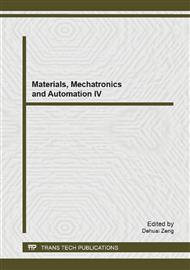p.288
p.293
p.298
p.306
p.314
p.321
p.327
p.333
p.339
The Study of Chopper in the LVRT of Direct-Drive Wind Energy Generation System
Abstract:
With the scale of wind farm continuously increasing, when grid fault, the influences of the wind turbines connected to the grid on the stability of the power grid can never be ignored. Therefore, there are higher standards of the wind turbines’ abilities of fault ride-through (FRT) and producing reactive power. This paper studies the direct-drive wind power system, and the main point is the fault ride-through (FRT) of the permanent magnetic synchronous generator (PMSG) with Chopper. By establishing the dynamic model of PMSG under the environment of DigSILENT, this paper simulates the fault ride-through (FRT) of the direct-drive wind power system connecting into power grid. During the research, we focus on the stability of voltage about the Chopper to the DC bus under faults. What’s more, in this paper, we analysis the data about how the Chopper help the DC bus to improve its stability. The simulation results show that: when there is a fault on the point of common coupling, the permanent magnetic synchronous generator has the capability of fault ride-through (FRT). Especially when there is a voltage dip on the grid side, the permanent magnetic synchronous generator could produce reactive power for power grid, effectively preventing the system voltage from declining seriously, so as to improve the system stability under faults.
Info:
Periodical:
Pages:
314-320
Citation:
Online since:
June 2014
Authors:
Price:
Сopyright:
© 2014 Trans Tech Publications Ltd. All Rights Reserved
Share:
Citation:


